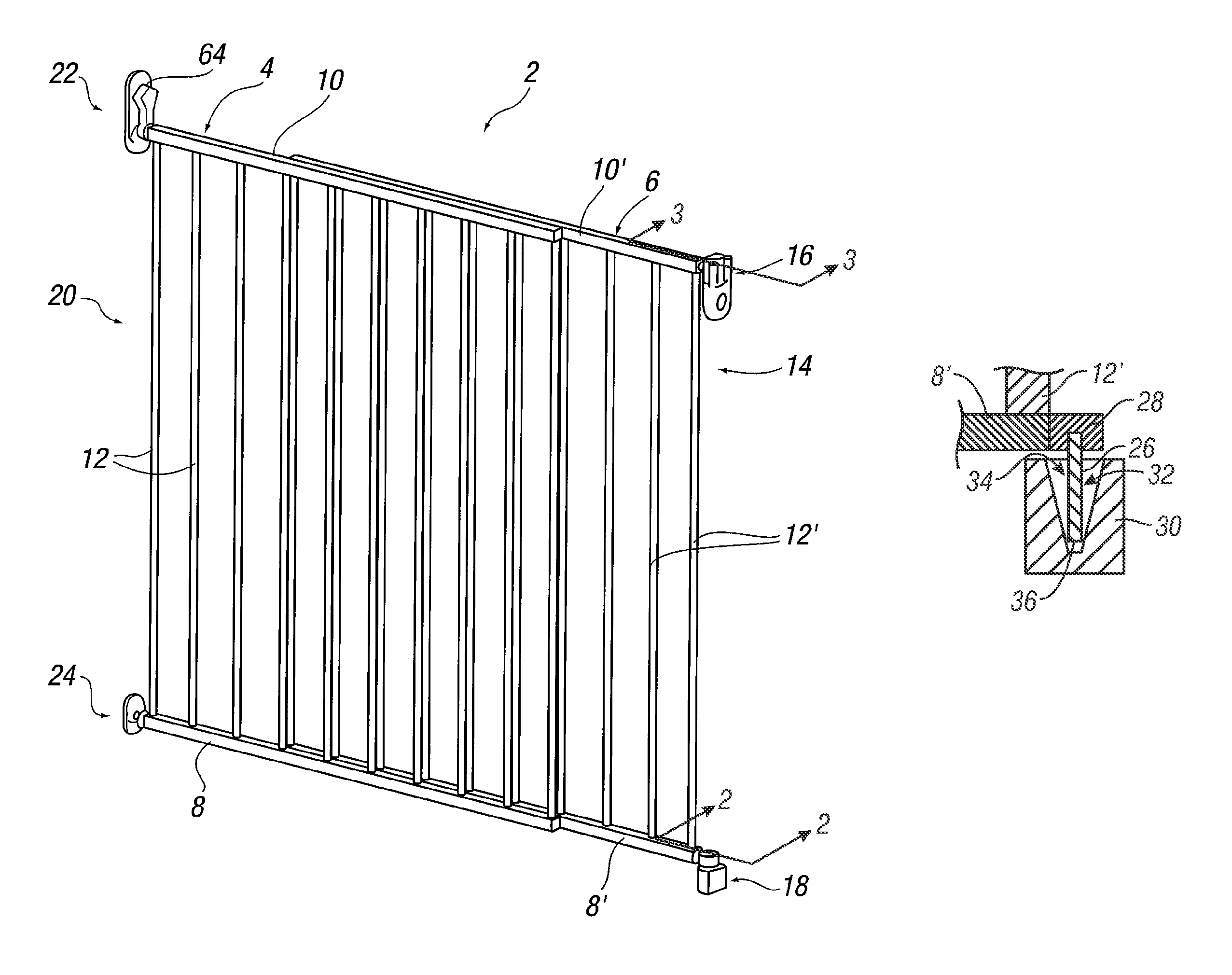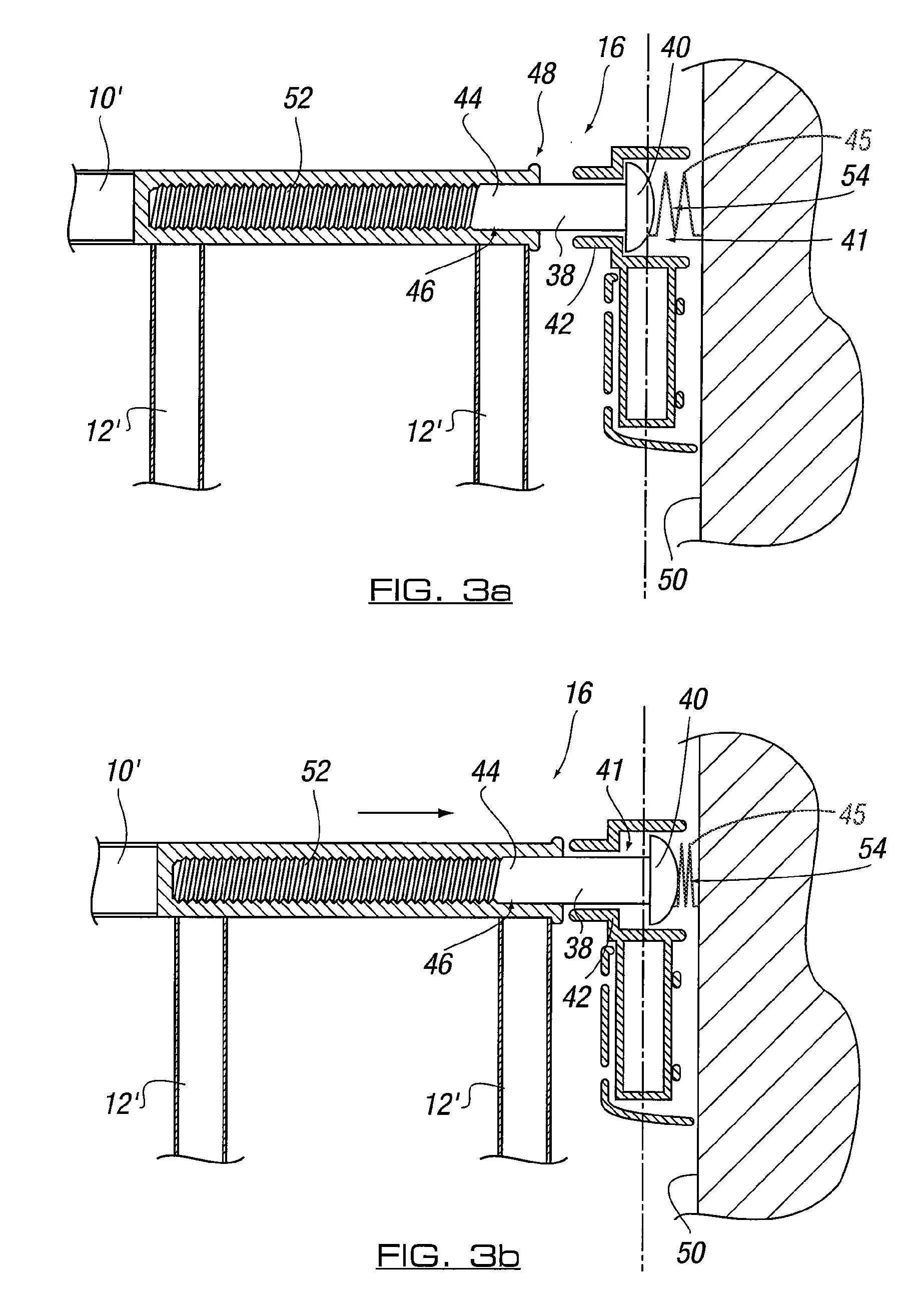Gate assembly
a technology for gates and hinges, applied in the direction of wing fasteners, door/window fittings, building components, etc., can solve the problems of damage to the hinges of gates, and the upper hinge of gates may still sustain damag
- Summary
- Abstract
- Description
- Claims
- Application Information
AI Technical Summary
Benefits of technology
Problems solved by technology
Method used
Image
Examples
Embodiment Construction
[0035]Referring firstly to FIG. 1, there is illustrated a gate assembly 2 including barrier means in the form of two gate panels 4, 6. The gate panels 4, 6 are slidably mounted to each other to allow adjustment of the width of the barrier means to allow the gate assembly to fit in different sized openings through which selective entry is required. For example, the gate assembly can be used as a child safety barrier to prevent young children or small animals from passing through the opening without adult supervision. It will be appreciated that the gate assembly of the present invention could include a single gate panel or three or more gate panels. The adjustment mechanism can be any suitable sliding or other adjustment mechanism.
[0036]Each gate panel 4, 6 includes a base member 8, 8′ and a top member 10, 10′ respectively, with a plurality of upright strut members 12, 12′ located at spaced apart intervals between the top and base members.
[0037]At one side 14 of gate panel 6 there is...
PUM
 Login to View More
Login to View More Abstract
Description
Claims
Application Information
 Login to View More
Login to View More - R&D
- Intellectual Property
- Life Sciences
- Materials
- Tech Scout
- Unparalleled Data Quality
- Higher Quality Content
- 60% Fewer Hallucinations
Browse by: Latest US Patents, China's latest patents, Technical Efficacy Thesaurus, Application Domain, Technology Topic, Popular Technical Reports.
© 2025 PatSnap. All rights reserved.Legal|Privacy policy|Modern Slavery Act Transparency Statement|Sitemap|About US| Contact US: help@patsnap.com



